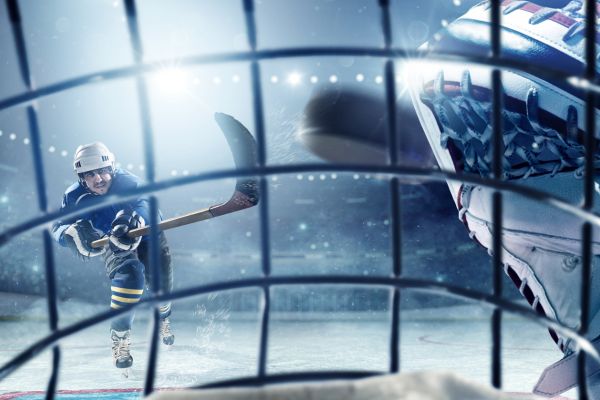When it comes to the world of sports, few comparisons spark as much interest as Ice hockey vs field hockey. These two dynamic games, while sharing the core concept of maneuvering a puck or ball with a stick, differ significantly in terms of playing surface, equipment, rules, and even player culture. Both sports have dedicated followings and rich traditions, yet they appeal to different climates, personalities, and athletic preferences. In this article, we dive deep into the defining characteristics of ice hockey and field hockey, examining everything from gameplay to gear, rules, and beyond.
The Evolution and Global Reach of Both Games
Ice hockey and field hockey may share a common name, but their historical and geographical roots differ. Field hockey boasts an ancient lineage, with traces dating back to civilizations in Egypt and Greece. The modern version evolved in 19th-century England, spreading through British colonies to become especially popular in countries like India, Pakistan, the Netherlands, and Australia.
Ice hockey, on the other hand, emerged more recently in colder regions of North America. With origins linked to various stick-and-ball games played on ice, the modern sport of ice hockey took shape in Canada during the late 1800s. Over time, it has become a staple in countries with harsh winters, including Russia, Sweden, Finland, and the United States.
When comparing ice hockey vs field hockey globally, field hockey tends to dominate in warmer climates, while ice hockey thrives where ice rinks are more accessible. Despite their regional popularity, both sports enjoy international appeal and are featured in the Olympic Games, attracting audiences worldwide.
Playing Environment and Surface
Perhaps the most apparent difference between ice hockey vs field hockey lies in the environment in which they’re played. Ice hockey is played indoors on a frozen surface, known as a rink, where players wear skates and glide at high speeds. The speed and physicality of the game are significantly influenced by the slippery nature of ice.
Field hockey, conversely, is played on grass or artificial turf in outdoor stadiums. The surface affects ball control and movement, often leading to a game that emphasizes precision and stamina more than brute force. The playing field in field hockey is also much larger than an ice rink, demanding greater endurance and positional awareness from players.
The environmental contrast between these two sports not only impacts gameplay but also determines training routines and athlete specialization. Athletes often choose one over the other based on climate, accessibility, and personal affinity toward skating or running.
Differences in Equipment and Gear
In the debate of ice hockey vs field hockey, gear and equipment form another stark dividing line. Ice hockey players wear extensive protective gear due to the high-contact nature of the sport. Helmets, shoulder pads, elbow guards, padded shorts, shin guards, gloves, and mouthguards are all standard. Ice skates are also essential, allowing players to move swiftly across the rink and make sharp turns or stops.
Field hockey players, while also equipped with shin guards and mouthguards, generally wear less protection. The game involves less body contact, so the focus is more on agility and speed than armor. The sticks differ as well—ice hockey sticks are longer with a flat blade, while field hockey sticks have a shorter curved end used for dribbling and precise ball control.
The ball and puck used in each sport also reflect the nature of their respective playing fields. Ice hockey uses a small rubber puck designed to slide smoothly across the ice, while field hockey uses a hard plastic ball capable of being passed, flicked, or hit across turf surfaces.
Gameplay and Rules: Speed vs Strategy
A deep dive into ice hockey vs field hockey reveals distinct gameplay mechanics shaped by each sport’s environment. Ice hockey is typically played in three periods of twenty minutes each, with frequent substitutions, power plays, and rapid shifts in momentum. Due to the confined rink space and slick ice, the game moves at a breakneck pace and often includes heavy checking, fast shots, and abrupt transitions.
Field hockey, by contrast, is structured around two halves or four quarters depending on the competition. It focuses more on positional play and strategic passing, with an emphasis on stick handling and tactical formations. While physicality exists, it is less overt than in ice hockey, with strict rules limiting body contact and encouraging technical proficiency.
One key difference involves scoring opportunities. In ice hockey, goals can be scored from virtually anywhere within the attacking zone, while in field hockey, goals must be struck from inside a specific area known as the shooting circle. This adds a layer of strategic planning to field hockey, as teams must work the ball into a defined area before attempting to score.
Team Composition and Player Roles
The comparison of ice hockey vs field hockey is incomplete without analyzing team dynamics and player roles. Ice hockey teams typically consist of six players on the ice at a time: three forwards, two defensemen, and a goaltender. Due to the fast pace, players are substituted every few minutes, creating short, intense shifts.
Field hockey teams have eleven players, similar to soccer: forwards, midfielders, defenders, and a goalkeeper. Because substitutions are less frequent and the field is larger, players must cover more ground and maintain higher levels of endurance throughout the match. This difference in team structure significantly influences coaching strategies, training focus, and even player physique.
In both sports, the goalkeeper holds a unique and vital role. Ice hockey goalies face blistering shots and must react in milliseconds, while field hockey goalies deal with aerial hits and angled drives from the shooting circle. The skill set required for each is specialized and demanding, yet central to the success of the team.
Culture, Popularity, and Fan Engagement
The cultural identity of each sport plays a significant role in the ice hockey vs field hockey narrative. Ice hockey is often associated with a rugged, fast-paced culture, embodying resilience and intensity. It’s a cornerstone of Canadian identity and a major professional sport in North America and parts of Europe.
Field hockey, while equally competitive, carries a different cultural flavor. It is deeply entrenched in Commonwealth countries and is particularly associated with school and collegiate sports. In countries like India and the Netherlands, field hockey enjoys immense national support and historical significance, especially at the Olympic level.
Fan engagement also differs. Ice hockey benefits from professional leagues such as the NHL, which draws massive TV audiences and fills large arenas. Field hockey’s global fan base is more spread out, with major interest centered around international competitions like the Hockey World Cup and the Olympics.
Closing Thoughts: Ice Hockey vs Field Hockey – A Matter of Passion and Preference
In the spirited discussion of ice hockey vs field hockey, there is no clear winner—only different expressions of athletic brilliance. Both sports showcase skill, strategy, and commitment, yet cater to distinct tastes and temperaments. Ice hockey delivers adrenaline-fueled action with a focus on speed and power, while field hockey emphasizes technique, endurance, and strategic finesse.
For fans and athletes alike, the choice often comes down to climate, culture, and personal connection. Whether gliding on ice or sprinting across turf, both forms of hockey offer exhilarating experiences that continue to captivate audiences around the world. Understanding their differences not only deepens appreciation for each sport but also highlights the diversity and beauty of athletic competition.



